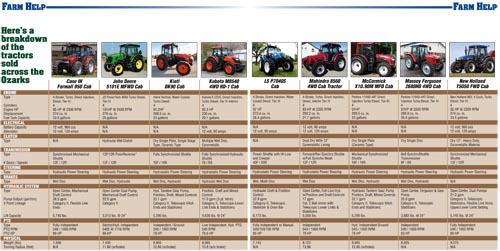“One of the big myths in forage weed control is that you need warm temperatures to spray,” said Blair Griffin, CEA staff chair for Johnson County, Ark. “We have conducted numerous herbicide demonstrations with temperatures in the mid 30s and the herbicides worked fine. Activity is usually slower, but still effective.”
The most common weeds for producers to control in the Ozarks area include: the winter and spring weeds of buttercup, henbit, wild garlic, red sorrel, thistles and plaintain; and the summer weeds are horsenettle, pigweed, wooly croton, ragweed and bitterweed.
According to Griffin, any of the winter and spring weeds can be controlled now. “Most winter weeds emerge by the end of October,” he said. “As a general rule, small weeds are much easier to control than large weeds. If you have had a problem with thistles and/or plaintain it is very important to spray in the fall. Control of thistle and plaintain is much better in fall than in the spring. Another benefit of fall spraying is if you miss or streak fields in the fall, you can retreat the areas you missed in the spring.”
Griffin said that if producers have had a problem with thistle or plaintain, they need to get out and spray.
“Typically it is really hard to tell the results of early spraying until March when the weeds start to grow,” Griffin said. “However, I have never, ever had anyone tell me they regretted spraying in the fall.”
It is important to make sure your sprayer is calibrated and the nozzles have a good spray pattern, Griffin added. A weed control program works best if you know the species of weeds that you are trying to control.
Herbicide application will vary among species types, producers should seek assistance from their local extension specialist or whom they plan to purchase chemicals from to make sure timing of application is correct for the plant they are targeting.
Pay close attention to herbicide labels for crop safety, use rates and surfactant requirements.
Weed control past this time of year will be effective on specialty treatments, such as brush and stumps. “Woody or berry species are more effective this time of year,” said Kevin Bradley, associate professor for the University of Missouri’s Division of Plant Sciences.
According to Bradley, the most difficult things to control in our pastures are the sprouts of woody species, honey locust, hedge and etc.
“Some people choose to spray as soon as they leaf out in the spring, but when they are more established this isn’t very effective,” Bradley said. “Other options are cutting and treating the stump.”
Often times producers take advantage of this time during the cooler months to tackle these hardier plants, since they have more time and there are fewer leaves and obstacles in the brushy areas of their pastures.
Producers can contact their county extension office for information about forage weed control, sprayer calibration and weed identification.




